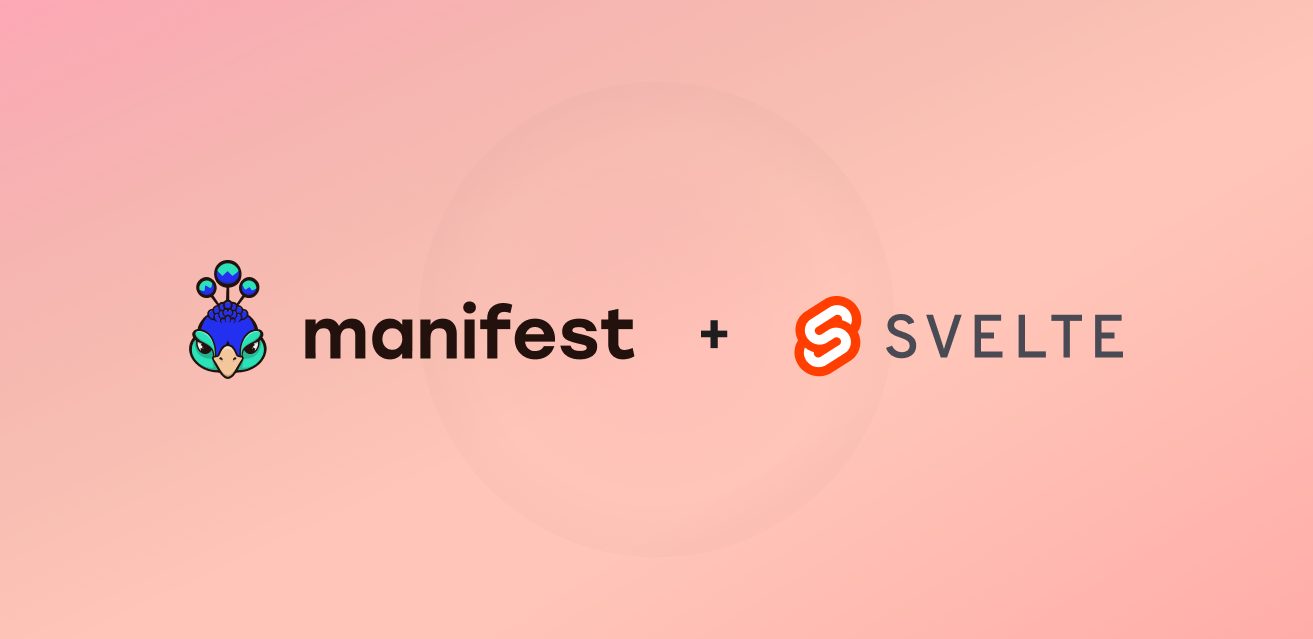Svelte + Manifest = Giving Svelte a proper backend with 7 lines of code 🧡🦚
 Bruno
Bruno
TL;DR: Using Manifest as backend for Svelte turns it into a full stack application with minimal coding. Check the source code on github
# manifest/backend.yml
name: My TODO App ✅
entities:
Todo:
seedCount: 10
properties:
- title
- { name: completed, type: boolean }
Svelte is an amazing framework with a very simple and elegant syntax.
However, a frontend is rarely enough to make a functional app: we often need a backend with some logic, a database and and a couple of API endpoints. This can often be time consuming and cumbersome.
In this post I will show what I think is the fastest and easiest way of giving a backend for Svelte: Manifest. It consists in a single YAML file (yes, YAML !) that generates a full backend.
We will create a todolist app with the following features:
Adding a new todo stores it in the database with the completed property set to false
Clicking on the todo checkbox marks it at complete or uncomplete
Clicking on the "remove" button deletes the todo
This is what we are building:
Create the Svelte app
Svelte has a nice installation script:
npm create svelte@latest my-app
In this example I choose the Skeleton project, in TypeScript and without any additional options.
We can now run the Svelte frontend with:
npm run dev
Add the backend
We can directly add the Manifet backend from the root of our Svelte app:
npx add-manifest
This will create a manifest folder with a backend.yml on it. Replace the dummy content with this one.
# manifest/backend.yml
name: My TODO App ✅
entities:
Todo:
seedCount: 10
properties:
- title
- { name: completed, type: boolean }
We can now run our backend server:
npm run manifest
You can now connect to your admin panel and see your OpenAPI documentation:
Connect the client and the server
Now we need to add the app logic and get the data from our backend. First of all intall the Manifest SDK:
npm i @mnfst/sdk
To make it short we will put all the logic in the src/routes/+page.svelte file. On bigger projects it is recommended to have a better separation of concerns
We will create our 3 functions:
getTodos: fetch all the todos
addTodo: Adds an uncomplete todo to the DB,
removeTodo: Removes a todo from the DB
ToggleTodoCompletion: Toggles the completion status of an existing todo
Lets start by defining what a Todos is:
// Define the Todo type.
type Todo = { id: number; title: string; completed: boolean };
let todos: Todo[] = [];
And now we can create our functions:
import Manifest from "@mnfst/sdk";
// Initialize the Manifest SDK.
const manifest = new Manifest();
// Fetch all todos from the database.
async function getTodos() {
todos = (await manifest.from("todos").find()).data as Todo[];
}
// Add a new todo to the database.
async function addTodo() {
await manifest.from("todos").create({ title: newTodo, completed: false });
// Fetch all todos again to update the list
getTodos();
}
// Remove a todo from the database.
async function removeTodo(id: number) {
await manifest.from("todos").delete(id);
todos = todos.filter((todo) => todo.id !== id);
}
// Toggle the completion status of a todo.
async function toggleTodoCompletion(todo: Todo) {
// Update the todo in the database.
const updatedTodo = { ...todo, completed: !todo.completed };
todo = await manifest.from("todos").update(todo.id, todo);
// Reassign the array to trigger update in the UI.
todos = todos.map((t) => (t.id === updatedTodo.id ? updatedTodo : t));
}
Putting everything together
Checkout the +page.svelte file on the demo repository to see the style and UI implementation. We managed to add simply a backend for this Svelte demo app ! Let me know your thoughts about this implementation ! What backend stack do you use for your backends usually ?
If you liked using Manifest, give us a ⭐ on Github to follow to projects and help us improving it. We also have some hacktoberfest issues 🎃 for contributors among you !
Subscribe to my newsletter
Read articles from Bruno directly inside your inbox. Subscribe to the newsletter, and don't miss out.
Written by


